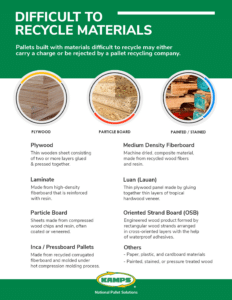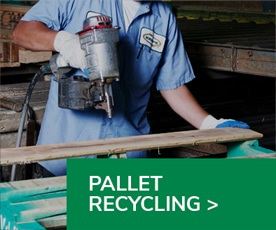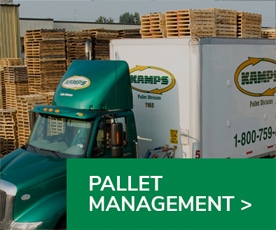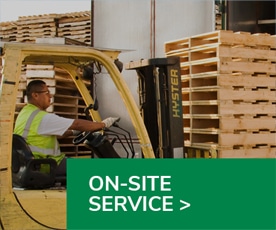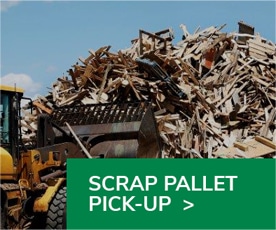With experience in pallet recycling for over 45 years, we have seen it all at Kamps; and have run into every sort of pallet and recycling challenge imaginable. One of the most common misconceptions is the notion that all pallets are equal. While all pallets do serve a common purpose, when it comes to recycling, the composition of the pallet is extremely important.
Pallets made out of certain, non-biodegradable, materials can pose challenges with regard to repair or harvesting components for re-use. This is because some materials are created with a one-time use in mind or are difficult to re-manufacture using recycled components.
Pallets built out of certain engineered wood products can pose a challenge both in the repair and component harvest process. Many pallets, largely from overseas, are made as an inexpensive one-trip-use platform out of press wood, plywood, composites and luan.
In a traditional wood pallet recycling process, if a pallet is unable to be repaired or harvested for remanufacturing, the pallet is ground up into mulch or bark. However, most of these engineered wood products are not suitable for mulching because of aesthetics or the binding agents used. These binding agents can leach into the soil.
At Kamps Pallets, our engineered wood products are redirected into a separate biofuel waste stream. These components that are not suitable for mulch or other landscaping products are turned into biomass and shipped to co-generation energy plants. Various power plants, schools, and factories will use this biofuel as an energy source.
Pallet Composition and Materials That Pose a Recycling Challenge
The following pallets are created with difficult to recycle materials and may carry a charge from your pallet company:
- Plywood
- Thin wooden sheet consisting of two or more layers glued and pressed together
- Laminate
- Made from high-density fiberboard that is reinforced with resin.
- Particle Board
- Sheets made from compressed wood chips and resin, often coated or veneered.
- Inca / Pressboard
- Made from molded wood fiber under a hot compression molding process.
- Medium Density Fiberboard
- Machine dried, composite material, made from recycled wood fibers and resin.
- Luan (Lauan)
- Thin plywood panel made by gluing together thin layers of tropical hardwood veneer.
- Oriented Strand Board (OSB)
- Engineered wood product formed by rectangular wood strands arranged in cross oriented layers with the help of waterproof adhesives
- Others
- Paper, plastic, and cardboard materials
- Painted, stained, or pressure treated wood.
Easy to Use and Print Guide
Takeaway:
While as a business sometimes you cannot control what kind of pallets you receive inbound, it is important to make a conscious decision of purchasing recyclable wood pallets for your outbound shipping use. The more wood pallets there are in the national supply, the better our collective recycling initiatives can become.
Pallets made out of organic wood are great for the environment as they have one of the highest rates of recycling (exceeding aluminum and plastic packaging). They are also one of the more durable forms of pallets.

